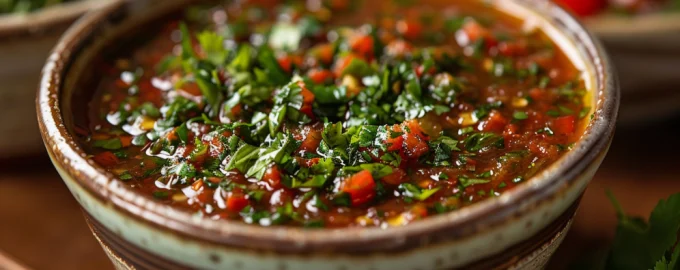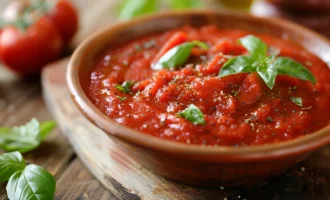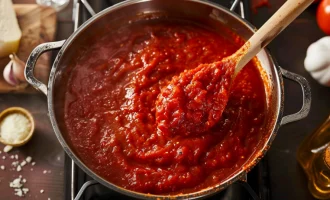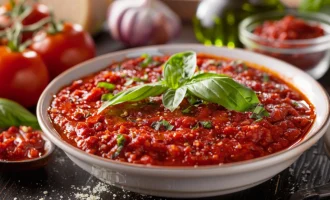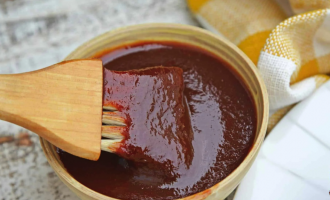Salsa, a term that in Spanish simply means “sauce,” refers in many cultures, particularly in the English-speaking world, to the traditional Mexican sauce known for its fresh, spicy, and vibrant flavors. The history of salsa dates back to the ancient Aztecs, Mayans, and Incas, with the earliest forms made from tomatoes, chili peppers, and ground squash seeds. It was not only a staple in their diet but also a method of preserving food. Over the centuries, salsa has evolved into various styles, including salsa roja (red sauce), salsa verde (green sauce), and pico de gallo (fresh, chopped salsa), each with unique ingredients and preparation methods. Today, salsa is enjoyed worldwide, served with chips, tacos, burritos, and a plethora of other dishes, embodying the essence of Mexican cuisine.
- Ripe tomatoes 500 g
- White onion 100 g
- Jalapeño peppers 30 g
- Cilantro (coriander leaves) 20 g
- Lime juice 30 ml
- Salt 5 g
- Garlic (optional) 10 g
- Start by finely chopping the tomatoes, onion, jalapeño peppers, and cilantro. For a less spicy salsa, you can remove the seeds and veins from the jalapeños. If using garlic, mince it finely.
- In a large bowl, combine the chopped tomatoes, onion, jalapeños, and cilantro. Add the minced garlic if you’re using it. This combination of fresh ingredients is the heart of the salsa, providing a balance of flavors.
- Pour the lime juice over the mixed ingredients and sprinkle with salt. The lime juice not only adds a bright flavor but also helps to preserve the freshness of the salsa.
- Gently stir all the ingredients until well combined. Taste and adjust the seasoning, adding more salt or lime juice if needed.
- Allow the salsa to sit for at least 10 minutes before serving. This resting time lets the flavors meld together, enhancing the overall taste.
Storage Tips
Salsa is best enjoyed fresh, but it can be stored in an airtight container in the refrigerator for up to 3 days. The acidity from the lime juice helps keep the ingredients vibrant but consume the salsa within this time frame for the best quality.
Useful Properties of the Main Ingredient
Tomatoes, the base of many salsa varieties, are rich in vitamins C and K, potassium, folate, and antioxidants, including lycopene. These nutrients contribute to heart health, vision, and reduced risk of certain cancers.
Interesting Facts
- Salsa surpassed ketchup as America’s favorite condiment in the 1990s, reflecting the growing popularity of Mexican cuisine in the United States.
- There are countless variations of salsa across Mexico, with each region boasting its own unique ingredients and preparation methods.
- Salsa is not only a beloved condiment but also a healthy one, with its ingredients offering a range of nutritional benefits and contributing to a balanced diet.
This classic salsa recipe captures the essence of traditional Mexican cuisine, offering a simple yet delicious way to enjoy the fresh flavors of tomatoes, onions, cilantro, and peppers. Whether served as a dip, a topping, or a side, salsa is a versatile and essential component of any Mexican meal.

